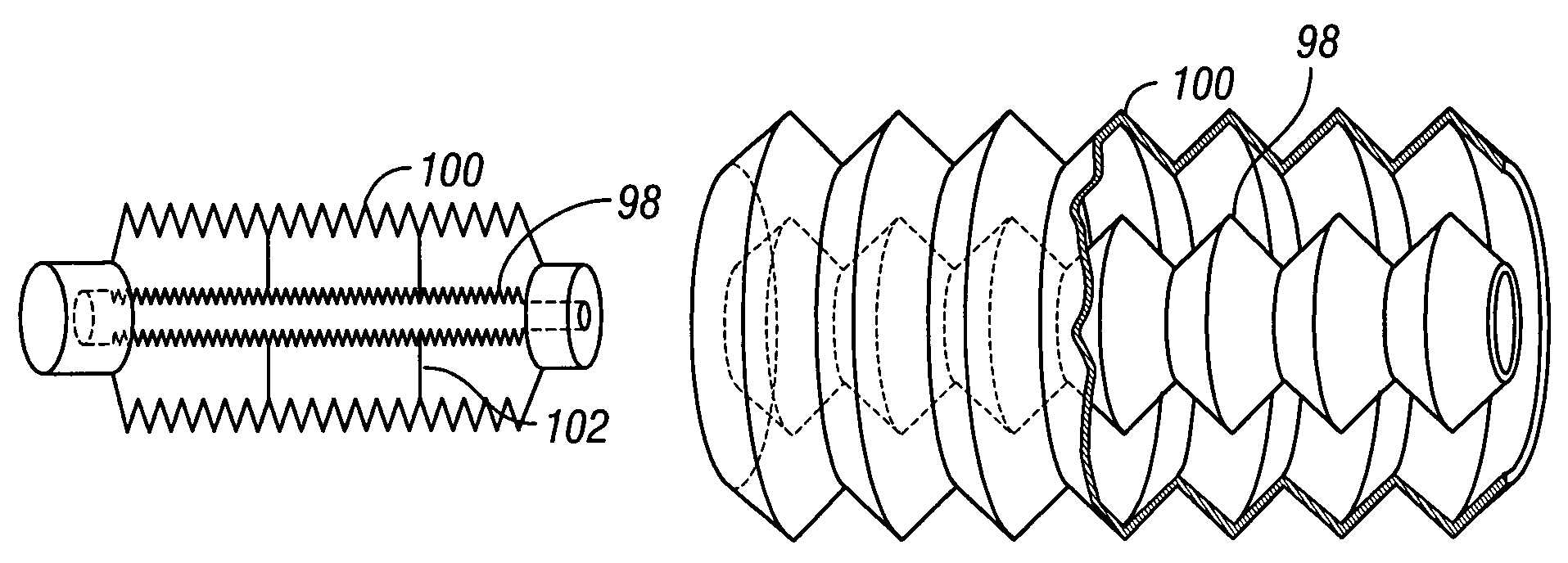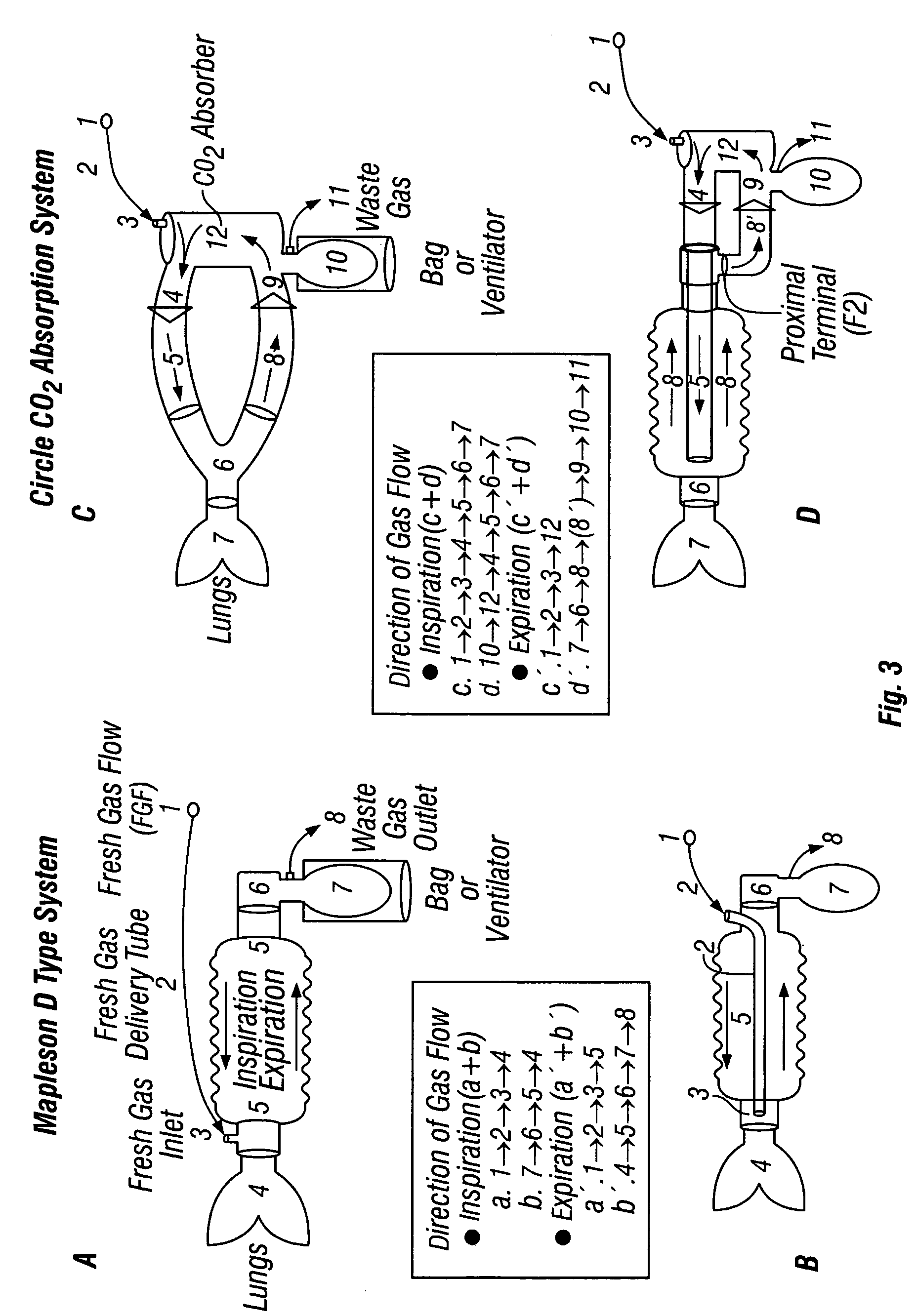Breathing circuits having unconventional respiratory conduits and systems and methods for optimizing utilization of fresh gases
a technology of breathing circuit and respiratory conduit, which is applied in the field of breathing circuit, can solve the problems of increased hospital costs, increased high production and/or use costs of both types of circuits, so as to reduce labor and processing costs, reduce disconnection risks, and prevent obstruction of inspiratory passages
- Summary
- Abstract
- Description
- Claims
- Application Information
AI Technical Summary
Benefits of technology
Problems solved by technology
Method used
Image
Examples
embodiment
Hybrid Circuit Embodiment
[0065]A hybrid circuit comprises conventional conduit and at least one flexible plastic sheet (e.g., polyvinyl) that forms a wall defining two or more lumens in the conduit. FIGS. 9A-B illustrate the components and operation of hybrid circuit with a common contractile wall of the present invention in schematic form. First and second tubes 116 and 118 share a common outer wall 120 that is axially expandable and contractible, and a common dividing wall 122 that can axially expand and contract with the outer wall. This embodiment may be constructed of pleated material such as that used to form ULTRA-FLEX®. Alternatively, common dividing wall 122 may be formed of a flexible plastic sheet, which permits the cross-sectional size of the two lumens to accommodate usage conditions. For. example, when pressure is higher in one lumen than the other, the wall expands into the lower-pressure lumen to make it smaller than the higher-pressure lumen, while the former lumen ...
PUM
 Login to View More
Login to View More Abstract
Description
Claims
Application Information
 Login to View More
Login to View More - R&D
- Intellectual Property
- Life Sciences
- Materials
- Tech Scout
- Unparalleled Data Quality
- Higher Quality Content
- 60% Fewer Hallucinations
Browse by: Latest US Patents, China's latest patents, Technical Efficacy Thesaurus, Application Domain, Technology Topic, Popular Technical Reports.
© 2025 PatSnap. All rights reserved.Legal|Privacy policy|Modern Slavery Act Transparency Statement|Sitemap|About US| Contact US: help@patsnap.com



